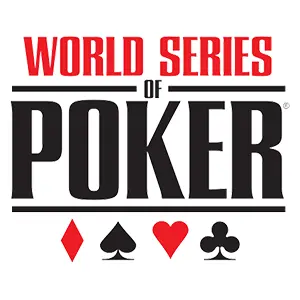The WSOP Grows One More Time
A record breaking year

The 2006 World Series of Poker was a landmark event. It featured the largest field in the history of the main event, with a total of 8,773 players each paying $10,000 to compete for the championship. This created a prize pool of over $87 million for the main event alone, and the overall WSOP prize pool surpassed $100 million, making it the richest event in not only poker but all of sports. Despite debates on whether poker is a sport due to its limited physical demands, the staggering $12 million first-place prize, which exceeded the winnings of top sporting events combined, firmly established poker as a big-time event.
The rise of online qualifiers
An increasing number of players qualified for the WSOP main event through online satellite tournaments. Since the turn of the century, when online poker began to flourish, there had been a 17-fold increase in entrants over six years. From just over 500 players in 2000, the number grew to nearly 9,000 in 2006. Most of these additional players were regular folks who had played small entry fee tournaments online and won.
The World Poker Tour (WPT) also contributed to the growth of poker’s popularity, attracting more interest and television coverage. People watched at home, got inspired, signed up for online poker accounts, and participated in WSOP satellites. Some online players even made it to televised final tables, inspiring more viewers to join in.
WSOP Circuit and new marketing strategies
To extend its brand beyond the annual event, the WSOP started the World Series of Poker Circuit around this time. These tournaments, while not directly related to the main WSOP, were WSOP-sponsored events. The WSOP name had become synonymous with poker excitement and riches, significantly increasing its value as a trademark. Harrah’s, eager to capitalize on this, secured lucrative marketing deals with several big companies, further boosting the business side of the WSOP.
Moving entirely to the Rio

In 2005, the tournament moved to the Rio, but the final table was still held at the Horseshoe. In 2006, the entire main event was hosted at the Rio, marking the end of an era at the Horseshoe. The new, much larger venue was a significant improvement, fitting for the grand scale of the WSOP.
Former champions and celebrities
Once again, the previous year’s champion outlasted all former champions. Sixteen past champions participated, including Doyle Brunson and Amarillo Slim, who both failed to survive the first day. Due to the sheer number of players, the opening day was broken into four sessions. By day four, only Joe Hachem and 1983 champion Tom McEvoy remained, with Hachem outlasting McEvoy.
Many celebrities also joined the action, though most exited early. Famous names included James Garner, golfer Paul Azinger, former basketball star Charles Barkley, Superman actor Dean Cain, former porn star Ron Jeremy, college basketball coach Denny Crum, former boxer Lennox Lewis, Spiderman actor Tobey Maguire, and American Pie actress Shannon Elizabeth. Professional snooker player Steve Davis outlasted them all, finishing in the money at 579th place.
Jamie Gold’s dominating performance

All participants at the final table the previous year received at least a million dollars. In 2006, this amount increased to at least $1.5 million. Jamie Gold, the most experienced and accomplished player at the final table, and former student of two-time WSOP champion Johnny Chan, showcased his skills. Gold was adept at getting into opponents’ heads and using table talk to his advantage. Despite technically violating WSOP rules by occasionally revealing one of his hole cards, he was not penalized that year.
Gold told his competitors he preferred second place to avoid dealing with the fame of a first-place win, likely another psychological tactic. He personally eliminated seven of the eight participants at the final table, demonstrating his dominance.
The final hand and aftermath
In the final hand, Gold hit top pair with queens against Paul Wasicka’s pocket tens. Although Wasicka was favored pre-flop, the queen on the flop secured Gold’s win. Gold became the all-time money leader in poker history with his $12 million top prize. However, the win was not without controversy. Crispin Leyser claimed he had a deal with Gold for half the winnings and sued him. A court froze $6 million pending the outcome, and the men eventually settled out of court for an undisclosed amount, speculated to be between $4 and $5 million. Despite this, Gold still enjoyed a significant payday, the championship bracelet, and the title of world champion.
World Series of Poker history
- The Beginnings
- Things Start Taking Off
- The Roaring Eighties
- The Early Nineties
- Silver Bars To The Comeback Kid
- Jack Binion Gets Forced Out
- The New Millenium
- The WSOP Gets Its World Rocked
- Harrah’s Takes Over
- The WSOP Moves To The Rio
- The WSOP Grows One More Time
- The Empire Strikes Back
- The November Nine Begins
- Once In A Blue Moon
- The 2010 Championship
- The 2011 WSOP Final Table Preview
- The 2011 WSOP Championship
- The 2012 World Series Of Poker
- The 2012 WSOP October Nine